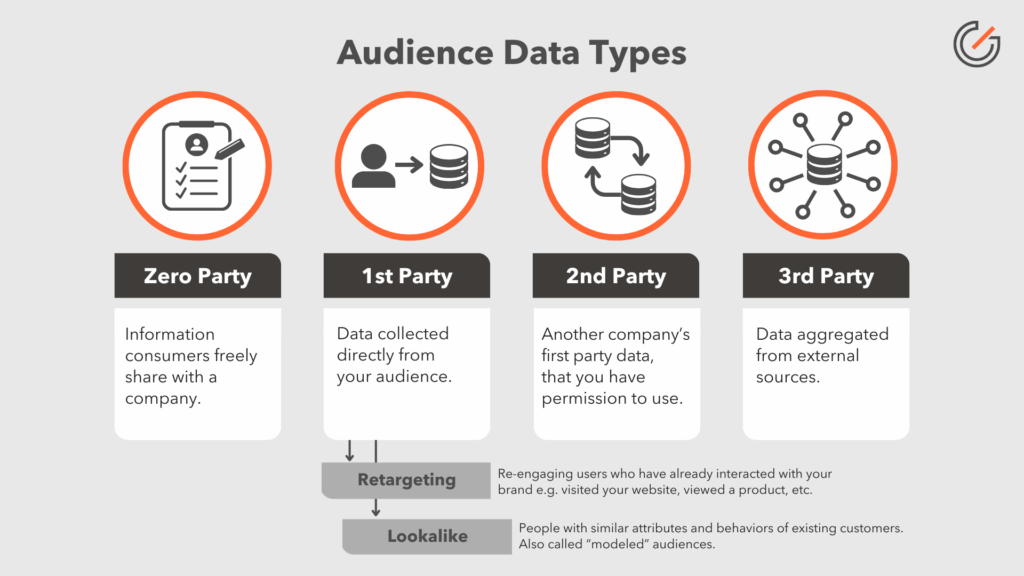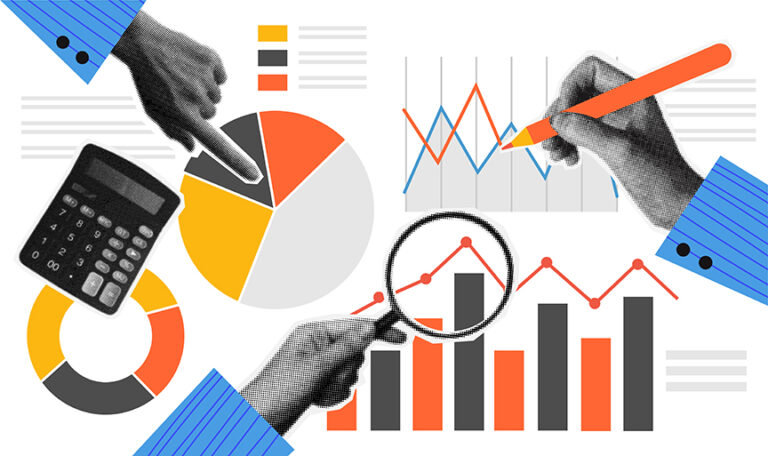Programmatic Foundations: Digital Audience Targeting
Programmatic advertising has become a pillar of today’s marketing strategies and often serves as an engine that amplifies the performance of other channels, from driving awareness that leads to search to increasing engagement across social platforms. As platforms evolve and audience behavior shifts, it’s worth revisiting the fundamentals that still power programmatic success.
In this series, we’re taking a fresh look at three key fundamentals of programmatic media success including:
- Who – Audience Targeting: Who are you trying to reach?
- Where – Media Inventory: Where are you meeting them?
- How – Execution: How are you getting there?
⚡ Note: We know we are leaving out the “Why” (your campaign objectives) and “What” (creative message or “what value consumers get”). While both are incredibly important, they are not always something media buyers control so for this series, our focus is squarely on the media strategy to ensure your advertising dollars are working their hardest.
The Basics of Audience Targeting
At its core, audience targeting is about identifying and reaching the people most likely to engage with your brand and take meaningful action–the “who” of your campaign sets the stage for everything else.
Right now, we’re experiencing an audience revolution. For years, the industry prepared for a post-cookie world—developing privacy-safe alternatives, prioritizing first-party data, and leaning into contextual targeting. But with Google’s recent pivot away from deprecating third-party cookies (at least for now), there’s renewed uncertainty around what the future holds for many cookie-alternative solutions.
Despite this massive u-turn, the pressure to improve audience quality has pushed marketers to get more sophisticated—doubling down on first-party data, scrutinizing third-party sources for quality and compliance, and applying tactics like lookalike modeling and contextual targeting. They’re also tapping into a wide range of tools to inform targeting strategy: from GA4 and Nielsen to CRM systems and social listening platforms, brands are using data to identify key traits and behaviors in their ideal customers. These insights drive smarter segmentation, sharper messaging, and better performance.
THE RESULT: Programmatic targeting is now more precise and performance-ready than ever.
Understanding Audience Data Types
To develop an effective audience targeting strategy, it’s essential to understand the types of data you’re working with. Each has unique strengths—and when used together, they amplify reach and performance.

1. First-Party Data
This is data your brand already owns—email subscribers, CRM records, purchase history, website activity, and app engagement. Because it’s collected directly from your audience, it’s considered the most reliable and high-performing data source.
In programmatic, first-party data serves as a foundation for both retargeting and lookalike audiences to help you scale. Meaning you can reconnect with users who’ve already interacted with your brand—whether they viewed a product, visited a location, or started a checkout. Or use that data to find similar audiences who share characteristics with your best customers.
2. Second-Party Data
Second-party data is someone else’s first-party data, shared through a trusted partnership. For example, a hotel chain might collaborate with an airline to share anonymized audience segments.
This data is often richer and more relevant than third-party sources, however is the least common due to challenges with availability plus difficulties integrating into data systems, making it less practical for many organizations.
3. Third-Party Data
Third-party data is audience information collected by entities that don’t have a direct relationship with the consumer. Collected from multiple sources and sold through data marketplaces, third-party data allows you to target broad segments like demographics, interests, and purchase intent.
But in today’s privacy-conscious and commoditized landscape, not all third-party data is created equal. Some sources may be using segments that are vague, outdated or built on questionable consent practices. That’s why both your media buyer’s expertise and your DSP’s partnerships matter.
A high-quality DSP with strong publisher relationships ensures you’re accessing responsibly sourced, frequently refreshed data—anchored in real engagement. These partnerships not only improve targeting accuracy but also enhance contextual alignment, viewability, and brand safety. And when strong data meets strong supply (covered later in this series), your audience targeting becomes not just current — but truly future-ready.
0. Zero-Party Data
Zero-party data is information voluntarily shared by users—such as preferences, intentions, and interests. Think profile data and self-selected interests on platforms like LinkedIn, Meta, Spotify, or Amazon.
These “walled gardens” use zero-party data to power opt-in targeting that complements broader programmatic strategies. Whether accessed through direct platform relationships or integrated via your DSP, a skilled digital agency should be prepared to incorporate these channels into your media plan when they align with your objectives and audience—ensuring optimal reach and performance.
How We Approach It at Gigawatt
At Gigawatt, we take a layered, goal-driven approach to audience strategy. We start with your highest-value, first-party data—site activity, past purchasers, CRM lists—and use it to power retargeting and lookalike modeling. Then, depending on the campaign’s objectives, we incorporate third-party demographic or contextual segments to scale reach, and recommend platforms like LinkedIn, Spotify, or Amazon that leverage zero-party data for deeper, more engaged targeting.
This is made possible through a combination of our premium DSP and direct data relationships, which ensure high-quality audience segments while managing cost and scale. With so many variables at play, expert media planning is essential—and our buyers know how to navigate the data, platforms, and trade-offs to build targeting strategies that deliver meaningful results.
Final Thoughts
In today’s rapidly shifting data environment, mastering audience targeting tactics is more critical than ever. As privacy regulations and platforms continue to evolve, building precise, high-performing audiences requires both strategic insight and hands-on media buying expertise.
The better you define your “who,” the stronger your outcomes across the rest of your media plan. From leveraging first-party data, to evaluating third-party segment quality, to incorporating zero-party audience options from closed platforms—developing the right targeting strategy demands both technical fluency and real-world experience.
When programmatic advertising is grounded in a strong audience strategy, performance follows.
What’s Next in Programmatic Foundations
Now that we’ve covered the various data assets used to connect with “Who” you need to reach, stay tuned for the next parts of this series, where we break down:
- “Where” – Exploring media inventory types, channels and supply partners
- “How” – Our tactical approach to activation, bidding, and optimization
Ready to reach the right audience with more precision?
At Gigawatt, we bring hands-on expertise in audience-first programmatic strategy. Whether you’re launching a new campaign or leveling up an existing one, our team will help you identify the right mix. Use the form below get in touch and learn more about how a strong audience strategy can make your media dollars work harder. 📩




